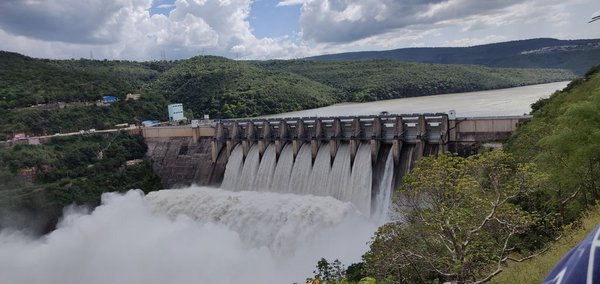- Share this article
- Subscribe to our newsletter
Hydropower dams: renewable energy at the expense of ecosystems
Hydroelectric dams harm biodiversity and contribute little to climate change mitigation, according to an international research team that includes experts from the World Wide Fund for Nature (WWF) and the Senckenberg – Leibniz Institution for Biodiversity and Earth System Research (Senckenberg Gesellschaft für Naturforschung (SGN)).
The researchers documented the global damage to rivers as a result of dams that are in planning. The results were published in the scientific journal Global Sustainability in August 2021.
They conclude that rivers with a combined length of more than 260,000 km will lose free-flowing status if the dams are built – with massive impacts on the unique biodiversity and the varied ecosystem services of these rivers.
At the same time, the researchers show that the planned dams will generate less than 2 per cent of the renewable energy needed by 2050 in order to keep the global temperature increase below 1.5 C.
“A negligible contribution if one compares this with the potentially disastrous consequences for the remaining free-flowing rivers as well as the people and species that depend on them,” warns Klement Tockner, aquatic ecologist and Director General of the Senckenberg – Leibniz Institution for Biodiversity and Earth System Research. “Hydropower is indeed a renewable energy source, but it is neither climate neutral nor environmentally friendly.”
According to WWF, there are currently around 60,000 large dams worldwide, and at least 3,700 more are planned or under construction. Since 1970, populations of freshwater species have declined by 84 per cent on average, more than in any other habitat. River dams are one of the main causes of this decline. Nearly one-third of freshwater fish are in danger of becoming extinct.
The researchers propose four strategies in order to achieve climate and energy goals and to conserve free-flowing rivers and their benefits for people and nature.
- Firstly, avoid fragmenting rivers by giving them official protection status or by developing alternative forms of power generation, for example wind and solar power.
- Secondly, minimise the impacts of hydropower plants on rivers by siting dams in locations that keep the negative effects on people and nature as low as possible.
- Thirdly, find opportunities to restore rivers through dam removal.
- Fourthly, offset the negative impacts of dams. If one river is severed by a dam, another watercourse should be protected in order to ensure that similar environmental values and services are maintained in the region.
“We must avoid water bodies becoming the biggest loser of the Paris Agreement. Renewable energy cannot be equated with environmentally friendly and climate-neutral energy sources. Climate change mitigation and the protection of biodiversity must not be considered in isolation; we have to tackle these two challenges together, otherwise climate action measures could have immense negative consequences for the environment,” says Tockner.
(SGN/WWF/ile)
Publication:Thieme ML et al. (2021). Navigating trade-offs between dams and river conservation. Global Sustainability
Read more on the WWF website (in German)





Add a comment
Be the First to Comment